At 2 a.m. overnight, turn forward one hour your clocks—those that aren’t auto-setting. I start the process early, so the Wilcox household has already moved ahead, unhappily. My circadian rhythm will be off-cycle for at […]


At 2 a.m. overnight, turn forward one hour your clocks—those that aren’t auto-setting. I start the process early, so the Wilcox household has already moved ahead, unhappily. My circadian rhythm will be off-cycle for at […]
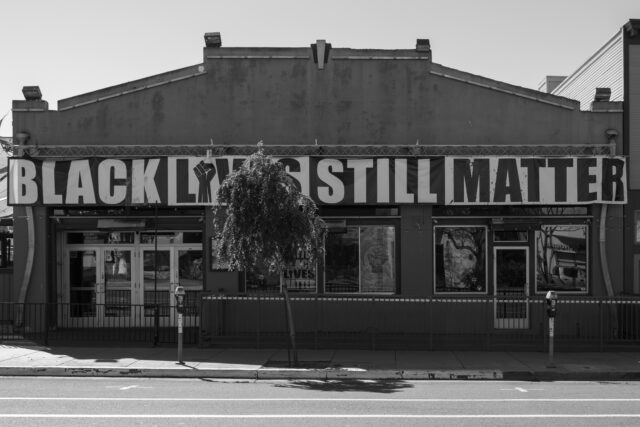
On March 1, 2021, as I walked along University Ave. in San Diego’s Hillcrest neighborhood, a huge banner beckoned my attention. I frequently see signs like this in apartment and house windows but nothing this large nor with Still added. I used iPhone XS to snap the companion to the Featured Image, which I captured the next day with Leica Q2 Monochrom. Vitals for the smartphone shot, which is composed as taken: f/2.4, ISO 16, 1/761 sec, 52mm (film equivalent); 9:05 a.m. PST. For the camera, aperture manually set: f/8, ISO 200, 1/400 sec, 28mm; 10:27 a.m.
Why is such a banner, with Still added, seen as necessary? The trial of former police officer Derek Chauvin is underway in Minneapolis. He is implicated in the death of George Floyd, whose alleged homicide sparked racial riots and protests in the city and across the country—with loud voices crying “defund the police” and “no justice, no peace”. Nearly ten months later, Americans have largely stopped rallying for racial reckoning—and the organization that gathered them before isn’t yet, if it ever will, marshaling masses together. Black lives still matter, but the movement apparently does not.

I really want to know. That sentence, the title, and a short list of TV Shows about viral epidemics is as far as this post proceeded when I started it on April 26, 2016. I meant to come back many times over the nearly five years since and really regret the failure following the World Health Organization’s declaration of SARS-CoV-2 (severe acute respiratory syndrome Coronavirus 2)/COVID-19 as a pandemic on March 11, 2020.
Still contemplating writing this essay, but not getting to it, I shot and edited the Featured Image on June 11, 2017. San Diego’s Museum of Man (since then renamed to “Us”) featured exhibit “Cannibals: Myth & Reality”. With so many of the virus movies or TV series focused on Zombie apocalypses, the exhibit artwork seemed so perfect illustration. Vitals, aperture manually set: f/5.6, ISO 100, 1/1000 sec, 28mm; 2:07 p.m. PDT, Leica Q.
Half a decade later, I wonder: How much did pandemic feature films and TV shows create soil for COVID-19 to grow into a state of global fear—and, as I will opine in six days, far exceeds the real risk posed to the majority of people; whether or not they are infected? Surely, you can guess my answer.
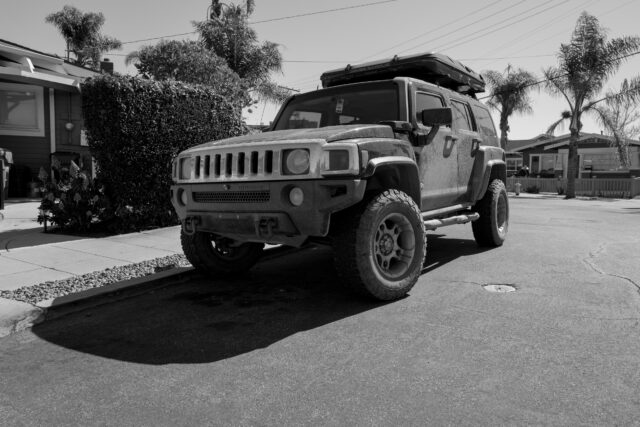
San Diego changes around me, particularly from the cost-of-living increases brought by the ever-growing emigration of high-tech workers escaping Northern California; they’re well-paid and find here comparatively affordable rents and home prices—all of which rise as more Googler-types relocate. SARS-CoV-2 (severe acute respiratory syndrome Coronavirus 2)/COVID-19 lockdowns set them free to work from anywhere there is reliable Internet.
So I was only modestly surprised to see a Hummer parked off of Lincoln in the University Heights neighborhood on Feb. 21, 2021. What amazed me more, when arriving here in October 2007, was the number of Hummers seen seemingly everywhere. You could have played an adapted Punch Buggy—and lost—for the few non-military Hummers traveling about the Washington, D.C. metro area that we left nearly 14 years ago. In San Diego, the contrast was stark, and I wondered why all the gas guzzlers given stereotypes about carbon-aware, environmentally-focused California culture. Should I answer status symbol? The late-2008 economic collapse purged the oversize vehicles from local roadways. Who could afford higher monthly payments or gasoline for a roadster rated city driving of 13 miles to-the-gallon? By mid-2009, their numbers had diminished to near nothing; that I observed. Eventually, as the economy recovered, based on increasing sightings, various Jeep models replaced the Hummers as all-around utility vehicles.

I specifically shot the Featured Image, yesterday using Leica Q2, to illustrate this essay. Vitals, aperture manually set: f/5.6, ISO 100, 1/400 sec, 28mm; 11:22 a.m. PST. The carts belonged to one of three homeless men gathered together a few meters away on the Hillcrest side of Vermont Street Bridge (University Heights is on the other). For sure, San Diego has a significant indigent population. But I write about San Francisco and something that surprises me—and perhaps will you, too.
According to the SF Chronicle (sorry, subscription required), the city is “currently sheltering more than 2,200 homeless people in about 25 hotels” and the “monthly program costs range from $15 million to $18 million”. By my math, that works out to between $6,818.18 to $8,8181.82 per person each month. If these people were paid, the equivalent annual salary would be between $82,000 and $98,000. Oh, and looks like the United States government will cover costs through the end of September 2021.
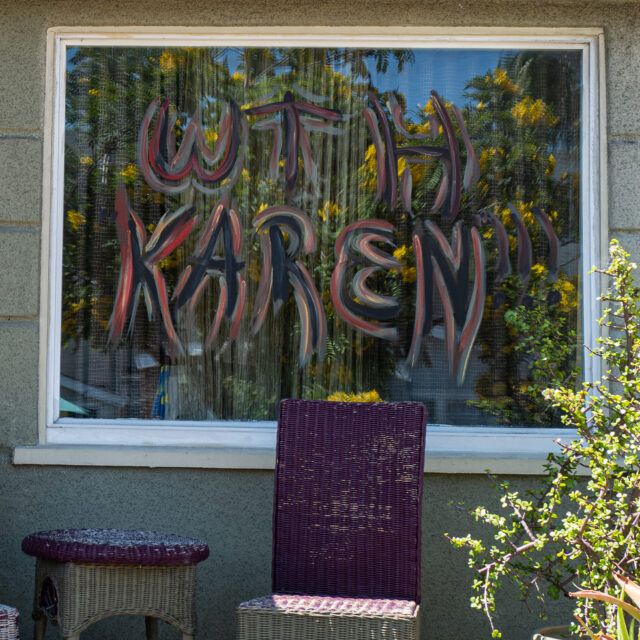
Six months have passed since I walked by the painted window, somewhere in San Diego’s North Park neighborhood, that is this post’s Featured Image. My thoughts needed some percolation before I was ready to express them. Here we go. Women of a certain age (often middle age, or older), economic status (Middle Class or wealthier, which means entitled), and race (white) are all over the InterWebs for behaving badly. Somebody smartphone-videos their tirades, which may or may not include racial slurs but more often is angry or exasperated. The typical stereotype is the woman who calls cops or store manager to settle a perceived grievance.
Call it the new KKK—Karen-Ken Klan, which lynches people in the social media public square, where they don’t lose their lives but absolutely lose their livelihoods: Jobs and reputations, for starters. Death would almost be merciful compared the merciless torture for which they endure.

I can’t speak for my wife, but to me a pair of benefits marshaled my interest in choosing our current apartment: The front windows and what I call the “squirrel tree” majestically before them—as expected, providing plentiful wildlife entertainment for our cats Cali and Neko to watch; for the humans, too. Yesterday, the management company overseeing the property snuffed out magic, and life.
Time is immeasurable this year, thanks to triple-P: pandemic, politics, and protests (e.g., SARS-CoV-2, severe acute respiratory syndrome Coronavirus 2, also known as COVID-19; Election 2020; and racial riots). As such, I don’t recall how long ago the building manager spoke to me about the tree—two or more months, seems like). He said that the perennial would likely be dramatically trimmed back; being top heavy, the branches pulled the trunk into brickwork before it (see first photo). Some discussion drifted to removal, which I opposed, promising in threatening tone: “The day they cut down that tree is the day I give notice”.
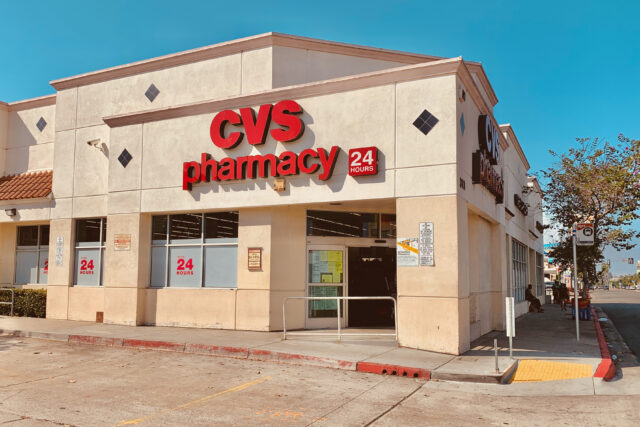
About a month ago, I observed something odd while waiting in line at the pharmacy. The gentlemen standing at the counter, who looked worse for wear, had come to pick up a prescription. But he met an obstacle. The druggist asked for identification, which the customer didn’t have and he was confused why any would be needed. “It’s a controlled substance”, the pharmacist explained. But in a sad and naively poignant regard, the gent didn’t understand. The medicine had been prescribed for him, but he didn’t possess any kind of identity card. Please, could he have his medicine?
Unkempt, and likely a recovering addict who belonged to San Diego’s ever-growing homeless population, the guy was plaintive rather than abusive—as someone else might have been. “Come back when you have ID”, the druggist informed. The fellow stepped back from the window and approached me, waiting next in line: “Do you have ID I can borrow?”
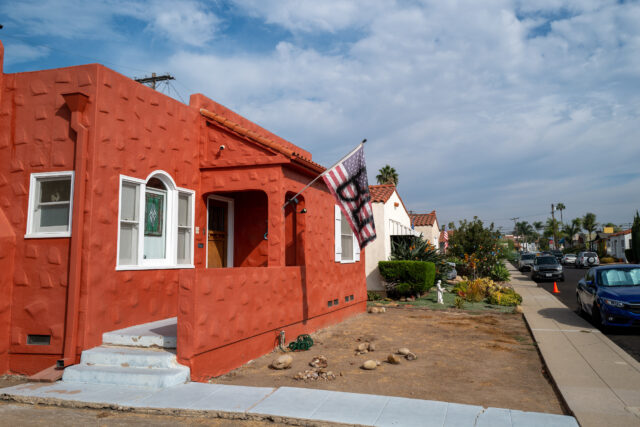
Shirley Ann Place is a seemingly sleepy converted alley between Louisiana and Texas Streets lined with historic Spanish-style cottages. While walking along there a few weeks ago, I sensed tension in the air and saw its manifestation in competing Black Lives Matter signs and American flags—but not both on the same building. Citizens chose to voice whom or what they supported by the icon displayed; for some people, nothing whatsoever. The pattern was undeniable and it is consistently observed across the San Diego neighborhood of University Heights.
Except that the displays of support along Shirley Ann Place felt more combative—stakeholders, something like a Hatfields vs McCoys feud. Black Lives Matter isn’t just a slogan—it refers to an organization with political ambitions that would upend American society. Presumably, flag wavers express patriotism and their stand against radicalism. That said, nothing surprised me more than meandering by yesterday and seeing BLM spray-painted on the Stars and Stripes.
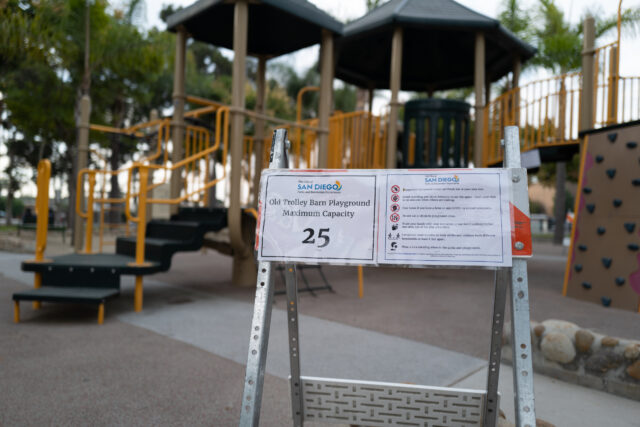
Finally. After SARS-CoV-2 (severe acute respiratory syndrome Coronavirus 2)—also known as COVID-19—restrictions shut down playgrounds across San Diego County in mid-March 2020, they reopened on October 2. Strange juxtaposition? Same day, the President of the United States was admitted to Walter Reed Army Medical Center, after testing positive for the disease. What’s that saying about coincidental timing? If there is one.
Along with the playgrounds, public libraries reopened—and the timing is quite deliberate. California has started sending out mail-in ballots for the November 3 election (we received ours yesterday). Drop boxes will be placed in libraries.
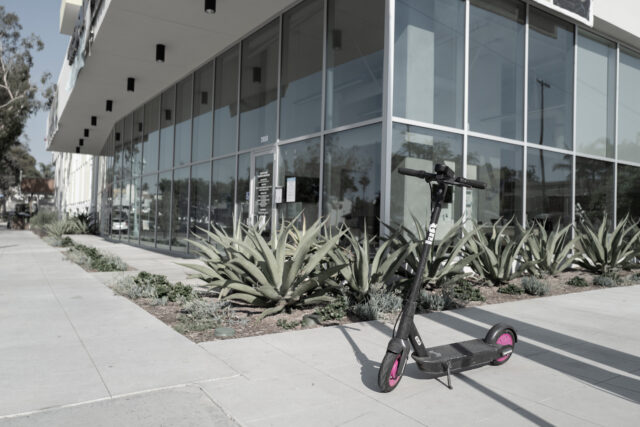
Ahead of the SARS-CoV-2 (severe acute respiratory syndrome Coronavirus 2)—also known as COVID-19—pandemic leading to California’s statewide shutdown, electric scooters suddenly vanished from many San Diego County communities. Local governments didn’t want the things cluttering the streets. But, as life returns to some semblance of normalcy, scooters creep back onto the streets, something like cockroaches emerging from Nuclear Winter.
Still, sightings are rare enough in my neighborhood that today I was surprised to see this lone Lyft parked at Alabama and El Cajon, where sits BLVD North Park, which is located in University Heights. If you can’t build real estate in the location you want, pretense naming is your solution.
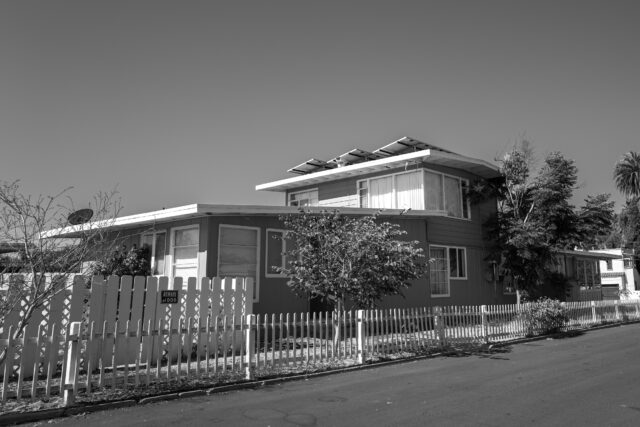
Be not fooled. We live in a surveillance society. I am not paranoid, nor even freaked by this startling situation. I merely take for granted that someone, somewhere, is watching—perhaps from a business’ security camera, household door webcam, or citizen’s smartphone.
Occasionally, though, surveillance severity surprises me. And I wonder: From what is the watcher afraid—or, worse, what is he or she hiding? The Featured Image is one example. I frequently walk by this house and marvel because the windows are so appealing but typically blocked by blinds or curtains. Who lives in such darkness? Vampires? On Aug. 18, 2020 something else rapped my attention—and I can’t say whether or not newly added. Look at those industrial-size security cameras. Yikes!